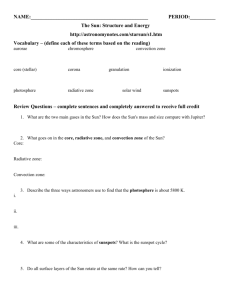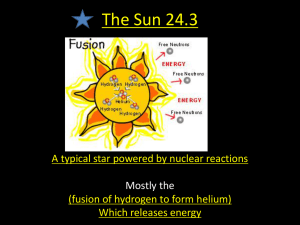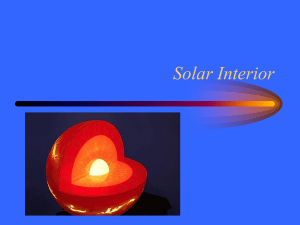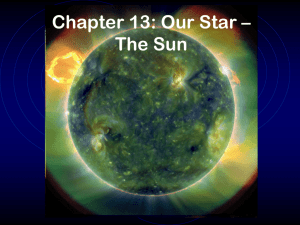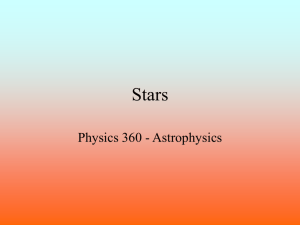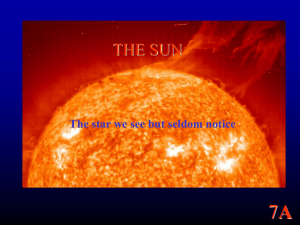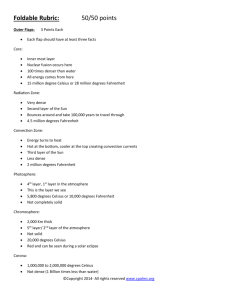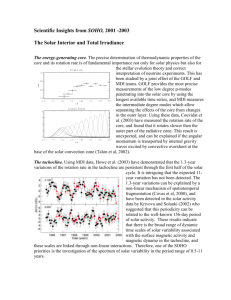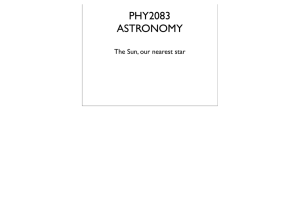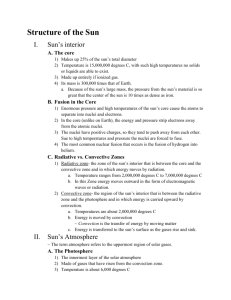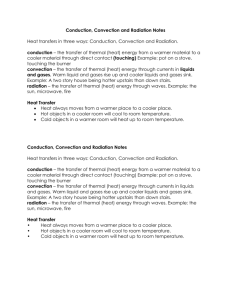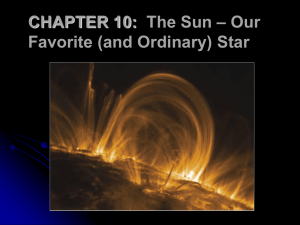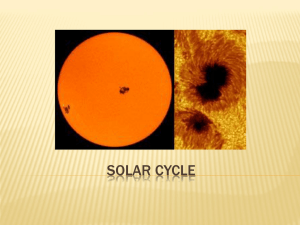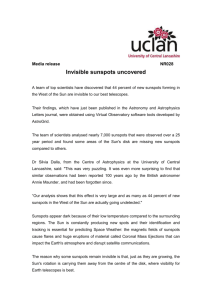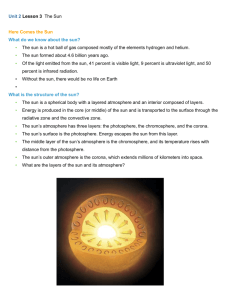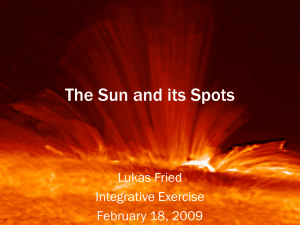Cornell Notes Template
advertisement
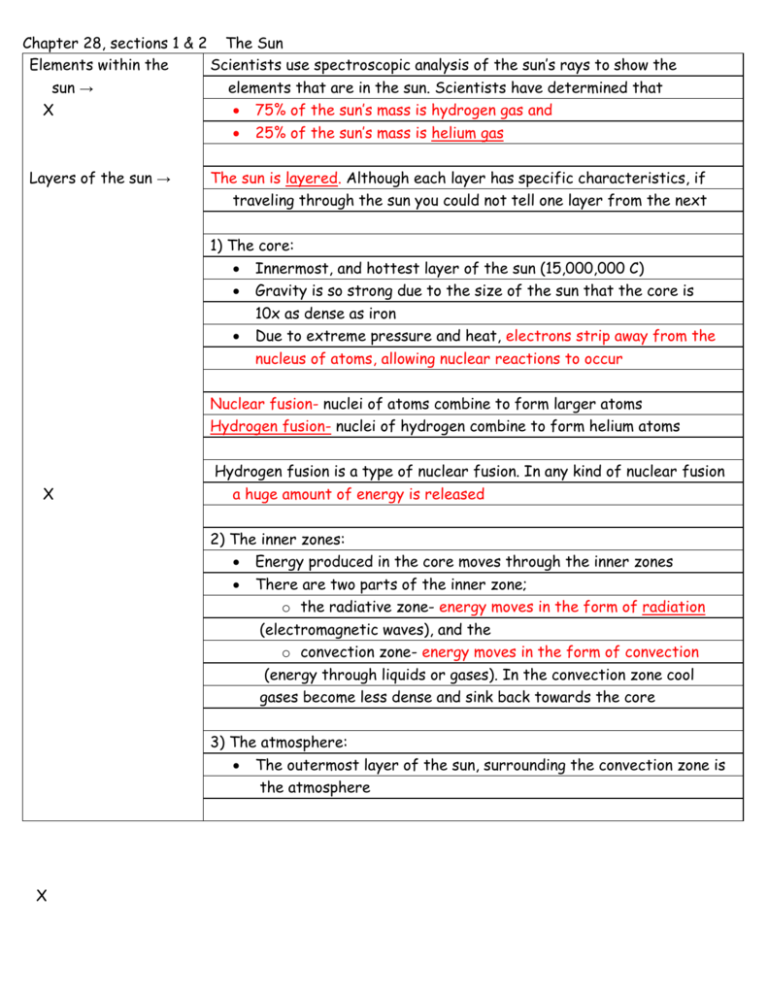
Chapter 28, sections 1 & 2 The Sun Elements within the Scientists use spectroscopic analysis of the sun’s rays to show the sun → elements that are in the sun. Scientists have determined that X Layers of the sun → 75% of the sun’s mass is hydrogen gas and 25% of the sun’s mass is helium gas The sun is layered. Although each layer has specific characteristics, if traveling through the sun you could not tell one layer from the next 1) The core: Innermost, and hottest layer of the sun (15,000,000 C) Gravity is so strong due to the size of the sun that the core is 10x as dense as iron Due to extreme pressure and heat, electrons strip away from the nucleus of atoms, allowing nuclear reactions to occur Nuclear fusion- nuclei of atoms combine to form larger atoms Hydrogen fusion- nuclei of hydrogen combine to form helium atoms X Hydrogen fusion is a type of nuclear fusion. In any kind of nuclear fusion a huge amount of energy is released 2) The inner zones: Energy produced in the core moves through the inner zones There are two parts of the inner zone; o the radiative zone- energy moves in the form of radiation (electromagnetic waves), and the o convection zone- energy moves in the form of convection (transfer (energy through liquids or gases). In the convection zone cool gases become less dense and sink back towards the core 3) The atmosphere: The outermost layer of the sun, surrounding the convection zone is the atmosphere X The atmosphere is divided into three layers; o Photosphere- the visible portion of the sun. This layer has X Solar activity → X areas where gases rise from and sink back into the convection zone called granulation o Chromosphere- a reddish layer of the sun only visible in a solar eclipse o Corona- the outermost layer of the sun that blends into space, and prevents the sun’s atomic particles from escaping Some electrically charged atomic particles from the corona do escape into space, creating solar winds The gas layers of the sun are constantly moving. The sun also rotates on an axis The combination of the moving gases and its rotation creates a magnetic field The magnetic field slows down the gases moving within the convection zone so they are cooler. Sunspots- cooler areas that appear darker than the surrounding photosphere Sunspots disappear and new ones form at the sun’s equator Sunspot cycle- the number of sunspots vary in an 11 year cycle When the number of sunspots is low, the sun is less active, and it is cooler on earth. When the sunspot number is high, it is hotter on earth Sunspots create prominences- huge arches on the sun’s surface that lasts for weeks or months Solar flares are even larger than prominences which increase solar winds causing changes in earth’s magnetic field Auroras are bands of light in the sky which are created from solar winds strike molecules in earth’s upper atmosphere X
